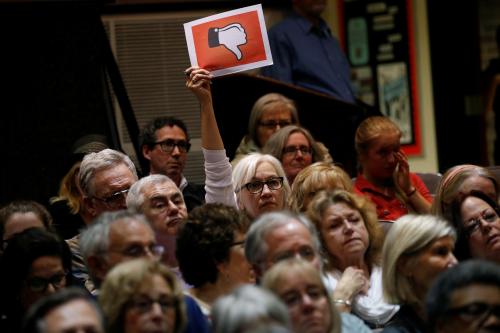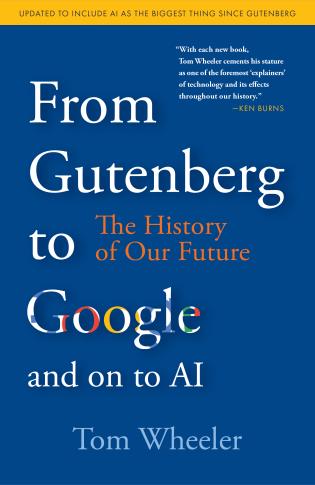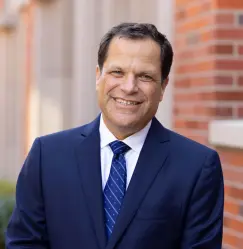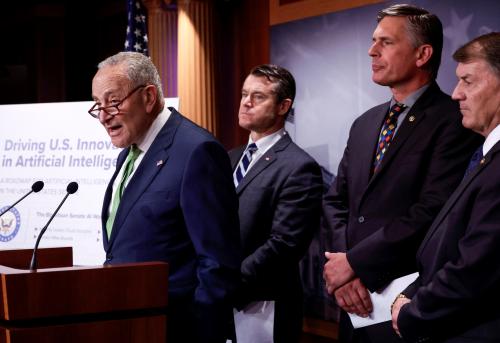This article originally appeared on STAT on September 12 2017.
Sen. Bernie Sanders plans to introduce his universal health care bill Wednesday; it is likely to serve as a litmus test for Democrats with presidential aspirations. The legislation is bold and simple, which makes it very appealing. A recent survey by the Pew Research Center found that 60 percent of Americans believe the federal government should ensure health coverage for all Americans.
But Sanders’s bill only gets it half right.
The part that’s right is that every American would automatically get health insurance. If that came to pass, the door would be open to lowering costs while eliminating the highly complex regulations needed to police our current system and the inequitable tax treatment that sustains it.
The part that Sanders gets wrong is that he would turn Medicare into a single-payer system for all, supplanting private insurers.
That approach has lots of problems, not least of which is an enormous price tag. Consider what happened in California earlier this year when the state legislature briefly considered a single-payer bill. An appropriations committee estimated it would cost $400 billion, over twice the state’s annual budget. Such complications make the Sanders bill — and other Medicare for all proposals — virtually impossible to enact.
People also forget that Medicare is a hidebound system. It took Congress more than 40 years to offer a prescription drug benefit, for example. Physicians are paid using an arcane system developed decades ago and that has now ballooned to more than 140,000 procedure codes, all of which is supervised (and gamed) by physicians themselves. Standard private sector cost-saving measures, like competitive bidding for routine services, are rarely used.
There is a better way — called universal catastrophic coverage — which borrows from both progressive and conservative playbooks. It would combine the federal guarantee of insurance for all with the cost-controlling benefits of insurers competing for that business.
From the consumer viewpoint, universal catastrophic coverage would look like this: All Americans not covered by Medicaid and Medicare would be placed in a single, massive risk pool. The government would assume the risk of insuring everyone, using a high-deductible policy that would guarantee that no one would be without care in the event of a health care crisis.
To keep the plan progressive and affordable for all, deductibles would be tied to income. Services that are very effective would be exempt from the deductible and fully covered. This includes many prevention services — like flu shots — but also medications for chronic disease, certain vaccines, and the like.
This would eliminate a host of problems in the current system: no more worries about preexisting conditions, no more losing insurance when changing jobs, no more mandated buy-in, and no more upward spiraling of premiums for those buying policies because healthy people are staying uninsured and not paying their share.
From the point of view of insurers, the new system would look like Medicare’s prescription drug plan, in which they compete for market share by offering different networks, deductibles, premiums, and supplemental coverage.
A version of universal catastrophic coverage that I devised with my colleague, Kip Hagopian, would cost the government about 15 percent less than the Affordable Care Act while insuring 115 million more people, according to a RAND study. Premiums would be about $3,000 annually, about 40 percent less than the ACA silver plans.
This approach borrows from liberal dreams for health care as a right, and from conservative conviction that market forces are the most efficient way to deliver health care and keep costs under control. That is why both sides can support it.
Being bold means asking for big changes. The current system of employer-based insurance would lose its tax-protected status, which currently costs the federal government $236 billion (about the same as the mortgage interest deduction, charitable deductions, and retirement benefit exclusions combined, according to the Tax Policy Center). Those savings would be used to underwrite the new system.
Vested interests will find many reasons to oppose change. But the bottom line is that we can cover everyone if we are smart about it.










Commentary
Why Bernie Sanders’s plan for universal health care is only half right
September 13, 2017